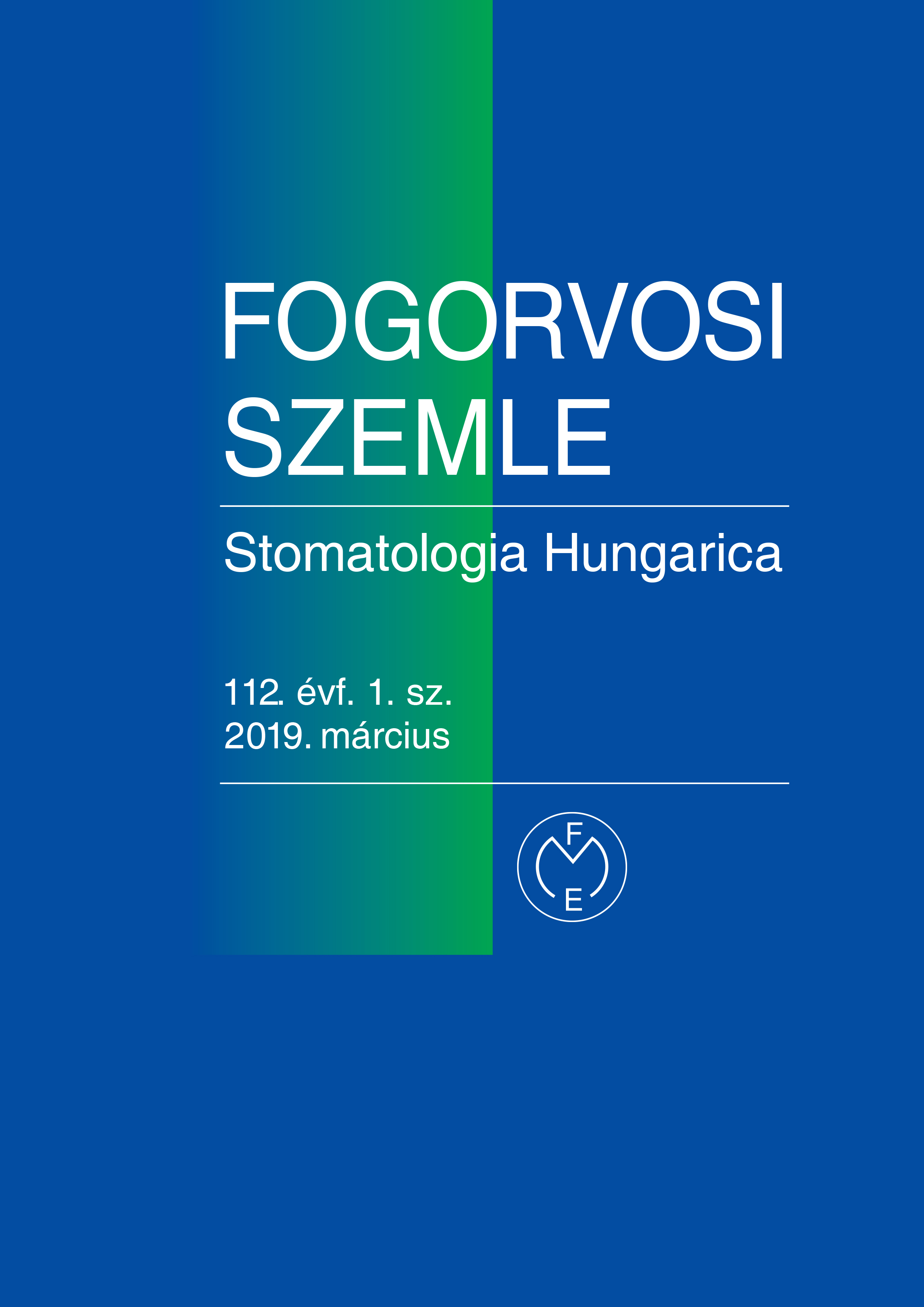Oral candidiasis, its clinical manifestations, diagnostics and therapy
Abstract
Oral candidiasis is the most common oral opportunistic infection caused by a yeast, Candida albicans. As Candida albicans is a member of the normal oral flora and its prevalence is around 40% among humans, the pathogenesis is still not clear.
The aims of the publication were, to make an attempt to overview the potential systemic and local risk factors of this opportunistic infection and also to summarise its clinical manifestations in the oral cavity.
Several local and systemic factors are known that can convert the saprophytic yeast to active pathogenic state. Oral candidiasis is divided into primary and secondary infections. Candida can adhere and penetrate the epithelial lining of the oral mucosa. The local predisposing factors facilitate the adherence and growth of the yeast, while systemic predisposing factors negatively affects the innate and adaptive immune system that control the growth of the yeasts. Several clinical manifestations can be distinguished. There are acute and chromic forms. The most severe form is the acute pseudomembranous candidiasis (thrush). It is a true primary infection that mostly affects severely compromised subjects. Its chronic forms mostly present in patients infected with human immunodeficiency virus (HIV). AIDS patients can be affected by a therapy resistant long term pseudomembranous Candida infection. The other clinical forms of disease are erythematous candidiasis, chronic plaque-type and nodular candidiasis. The most common clinical form is the so called denture stomatitis. Also some other Candia associated oral diseases – like median rhomboid glossitis and cheilitis angularis are recognized. The clinical diagnosis is relatively simple based on its characteristic clinical signs and subjective symptoms. The laboratory confirmation of the Candida infections is more difficult, as the Candida genus is part of the normal flora. Cytological smear techniques and culturing are the most common laboratory techniques. The disease management is complex and sometimes is really challenging. It is important to identify and if it is possible eliminate the predisposing factors. The most commonly used antifungal drugs belong to the groups of polyenes or azoles. It is because the majority of oral fungal infections affect only the superficial layers of oral mucosa the first choice of therapy should be the topical application of the antifungal drugs, because the majority of antifungal drugs have several systemic side effects.
Copyright (c) 2021 Authors

This work is licensed under a Creative Commons Attribution 4.0 International License.


.png)




1.png)



